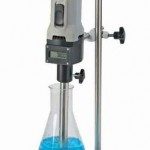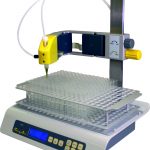CAT Scientific | Revolutionizing Botanical Post-Processing Equipment
The foundation of success rests in the quality of your products. The latest developments within botanical processing applications has stimulated the evolution of botanicals consumables. CAT Scientific has established itself as a leader in botanical post-processing equipment. Through a combination of deep-level research and cutting-edge technology, our solutions are used to create superior products, such as:
- Tinctures
- E-Juices
- Concentrates
- Topical Creams/Oils
- Beverages
- Emulsifying Terpenes and Distillate
Botanical consumers are unique, but the need for consistency, quality and purity is universal. CAT Scientific supplies laboratory grade post-processing equipment to ensure satisfaction, uniformity and superiority among a crowded marketplace.

Our Solution to Botanical Processing | Consistency, Adaptability, Diversity
CAT Scientific manufactures equipment to support the longevity of businesses by offering real-world solutions to ever-present problems. Our dedication to the progress of the botanical industry is demonstrated by equipment versatility.
Homogenizer Drives
Our advanced rotor-stator generator assemblies offer the flexibility to easily dissolve, blend, emulsify and mix various ingredients. The key to evenly distributing cannabinoids or terpenes throughout a solution is based upon using the correct technology, a Kitchen Aid mixer is not it! CAT’s advanced homogenizer drives and generator shafts elevate the quality and superiority of your products.
Magnetic Hotplate Stirrers
The delicate task of post-processing cannabis oils demands accuracy and functionality. CAT’s line of Programmable Magnetic Hotplate Stirrers provide precise liquid temperature control, which is paramount for undertakings like, decarboxylating oils, purging residual ethanol after winterization, processing short path cannabinoid distillates, among other applications.
Laboratory-Grade Equipment
CAT Scientific is dedicated to providing a variety of laboratory-grade equipment to meet the varying needs of this industry. Visit our “All Products” page to delve deeper into our offerings. Explore our extended list of unpublished equipment by “Contacting Us” and let’s uncover a solution to your processing tasks.
An Evolution in Botanical Processing | Modern Equipment for a Modern Industry
 We are witnessing the birth of a new industry. The legalization of medical and recreational botanicals has triggered an unprecedented need. Within a matter of years, a once dormant market has bloomed beyond the expectations of many.
We are witnessing the birth of a new industry. The legalization of medical and recreational botanicals has triggered an unprecedented need. Within a matter of years, a once dormant market has bloomed beyond the expectations of many.
To solidify your position within the industry, facilities must be equipped with machinery capable of consistently delivering uniform products.
We understand the problems faced by many manufacturers. It’s with this understanding we’ve created a line of advanced post-processing equipment designed to:
- Eliminate Costly Processing Glitches
- Adapt to Current Trends
- Streamline Production and Manufacturing
- Deliver Consistent Results
Regardless of your business scope or post-processing needs, we offer laboratory-grade equipment specially designed to solidify the value of your brand.
Linking Businesses to Solutions | Connect With Us for the Latest Botanical News
CAT Scientific is dedicated to your success, and ultimately, the success of the botanical industry. We are eager to assist you in any way possible.
Navigate to our Knowledge Library to uncover the latest research into the therapeutic benefits of botanicals as well as to learn more about the capabilities and functionality of our equipment.
For any questions regarding our equipment, “Ask Us a Question” and we’ll respond as quickly as possible.
How to Verify Lab Stirring Temperatures
Establishing optimum temperatures to first develop then commercialize new products in the research lab should not be left to chance. Because stirring is often involved in developing new products researchers depend on an accurate means of determining the optimum processing temperature. This post describes how to accurately verify lab stirring…
Read MoreKey Components of Magnetic Stirrers
What is a Magnetic Stirrer? Dating from 1917 magnetic stirrers have evolved and been perfected over the years to perform critical mixing functions in the research lab when low-viscosity liquids are being processed in beakers and flasks to 10 liters in capacity. We at CAT Scientific call magnetic stirrers the unsung…
Read MoreHow to Maintain Lab Homogenizer Shaft Bearings
Keeping laboratory and pilot plant homogenizers in proper operating order requires special to critical components located out of sight within the homogenizer shaft tube. These are the homogenizer shaft bearings that keep the rotor shaft centered in the tube. While homogenizer shaft bearings and other components are in the tube…
Read MoreHow to Specify a High Powered Lab Homogenizer
Lab homogenizers are relied on by R&D and pilot plant personnel to develop then refine processing guidelines used for commercial-scale production. Processing may involve blending, emulsifying, dispersing, cell disrupting, particle reduction and similar activities. Samples range from highly fluid liquids to more resistant viscosities, to fibers and in some cases,…
Read MoreHow to Maintain your Laboratory Homogenizer
Laboratory homogenizers are important investments for R&D and pilot plants developing processes to scale up to commercial production. First appearances may suggest scientific homogenizers are not that complex. Not true! A close look reveals that lab homogenizers contain several complex components, all of which are capable of trapping contaminants that…
Read More


